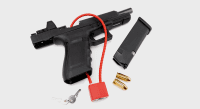In Response to: FAQs: AI and prompt engineering
Dear Editor,
Another way to look at prompt engineering is to differentiate it from prompt design. They are closely related but distinct fields in AI, using different techniques to effectively interact with large language models (LLMs). Because they focus on different aspects of this interaction, they require different knowledge and skills.
Prompt design is user-centric focused on crafting prompts or queries that effectively convey the user’s inquiry to the AI tool to receive the most relevant responses in order to achieve the desired goal. It requires understanding linguistics, cultural nuances, and how AI processes text.
In contrast, prompt engineering expands to also include system- and performance-centric principles needed to achieve the desired goal. More technically focused, it requires advanced technical knowledge and skills such as system integration, programming, use of datasets, data analytics, and how AI models function.
A simple example on using AI chatbots in patient triage highlights the differences. The goal of prompt design would be to create a chat that initially assesses patient symptoms eliciting information resulting in the goal of appropriate level of care. The goal of prompt engineering would be to ensure the AI chatbot functions seamlessly across different platforms such as tablets, desktop computers, and smartphones as well as hospital management systems such as bed control and staffing.
Linda Harrington PhD, DNP, RN, NI-BC,UXC, FHIMSS, FAMIA
Chapel Hill, NC
















